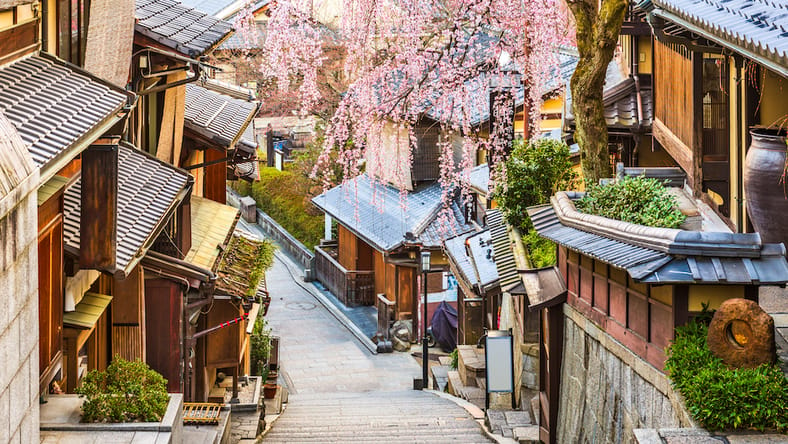
Oppenheimer is not supposed to be funny, but one grimly amusing moment comes when J Robert Oppenheimer, played by Cillian Murphy, meets with U.S. military brass to discuss where his terrible invention, the atomic bomb, should be used first. Kyoto, Japan is quickly ruled out for reasons that seem arbitrary and laughably unfair.
In the scene, U.S. secretary of war Henry Stimson, played by James Remar, explains that the U.S. started with a list of 12 Japanese targets, but took Kyoto off the list because of its cultural significance to the people of Japan. (The capital of Japan for more than 1,000 years, from 794 to 1868, Kyoto was long known as Japan’s keeper of tradition.)
But then Stimson offers a weird aside: He and his wife spent their honeymoon in Kyoto.
Did the secretary of war, with the whimsy of a cruel God, really spare a city and level two others because of personal taste? In the screening of Oppenheimer I attended, the moment yielded astonished laughter from many in the audience.
Though Oppenheimer is extremely factual — it’s based on the decades-in-the-making, Pulitzer Prize winning book American Prometheus: The Triumph and Tragedy of J. Robert Oppenheimer by Kai Bird and Martin J. Sherwin — the honeymoon in Kyoto scene is based on conjecture.
The Oppenheimer Honeymoon in Kyoto Scene
Kyoto really was on the list of initial possible targets for the atomic bomb, and really was removed. Remar and Nolan added the notion that Stimson’s personal taste was a factor in that decision after Remar learned that his character and his wife had spent their honeymoon in the cultural capital. (Stimson visited Japan several times in the 1920s when he was the governor of the Philippines.)
It’s unclear whether the real Stimson really did ask for Kyoto to be spared — others credit American archaeologist and art historian Langdon Warner with fighting to protect the most respected Japanese cultural sites.
But from a filmmaking perspective, the honeymoon scene pointedly and efficiently underlines exactly why human beings, in our fickleness, perhaps can’t be trusted with atomic power.
“It has this bureaucratic quality of a group of men discussing massive destruction and how they’re going to do these awful things. And you’re suddenly seeing a human face to these negotiations,” Nolan told New York.
Also Read: Did Truman Really Call Oppenheimer a Cry Baby?
The U.S. ultimately chose to bomb Nagasaki and Hiroshima in August of 1945, a decision that killed an unknowable number of people, mostly civilians.
Though the honeymoon scene is a storytelling device, decisions about whether to bomb, and where to bomb, really were also based on fallible human calculation. Nagasaki wasn’t even the initial target of the bombing run that destroyed the city: It was chosen because the initial target on the day of the bombing, Kokura, was protected by cloud cover. Kokura was seen as a more appropriate military target than Nagasaki because it was the home of a huge munitions factory.
How Many Died in the Bombings of Hiroshima and Nagaskai?
The Bulletin of Atomic Scientists —founded in 1945 by Manhattan Project scientists who worked under Oppenheimer — has calculated the number of total deaths resulting from the bombings of Hiroshima and Nagaski somewhere between 110,000 people — the most conservative estimate — and perhaps as many as 210,000.
But even those devastating numbers may be low: As the Bulletin notes, Shinzo Hamai, the mayor of Hiroshima in 1949, asserted that between 210,00 and 240,000 died in his city alone. (He said he based this estimate on his personal experience in working with rationing cards.)
As J Robert Oppenheimer comes to argue in Oppenheimer, an atomic weapon — and the weapons that evolved from it — are too powerful to be used by anyone, ever. The film that bears his name argues that no human being is perfect enough to decide when and where one nuclear weapon — or thousands of them — should be deployed.
But for all the passionate arguing of this point onscreen, it may be made most effectively by a small aside about a honeymoon in Kyoto.
Oppenheimer is now in theaters.
Main image: Kyoto, Japan in spring in the Higashiyama District. Courtesy of Shutterstock.

